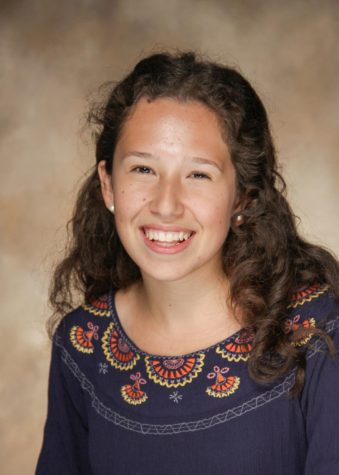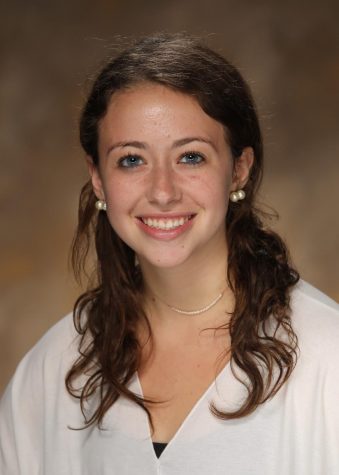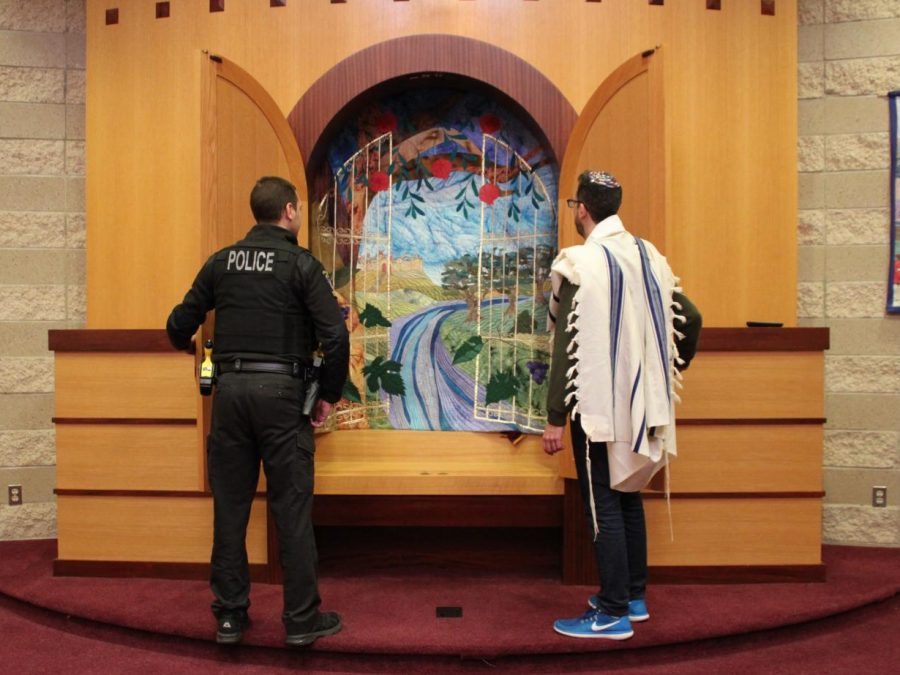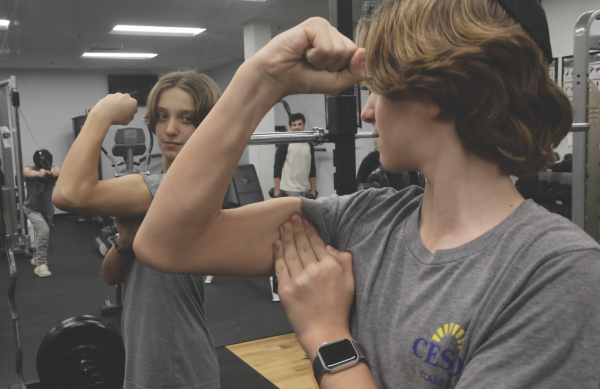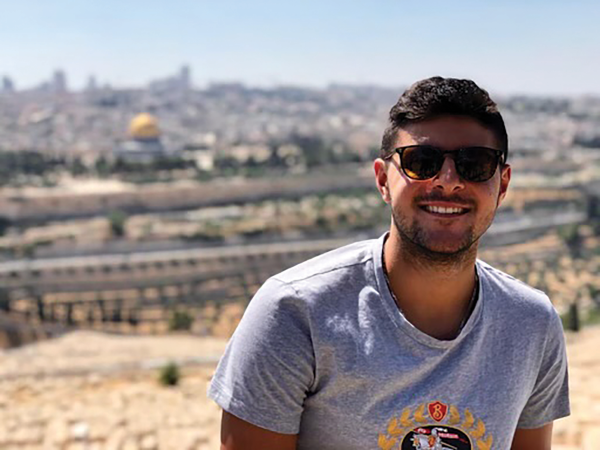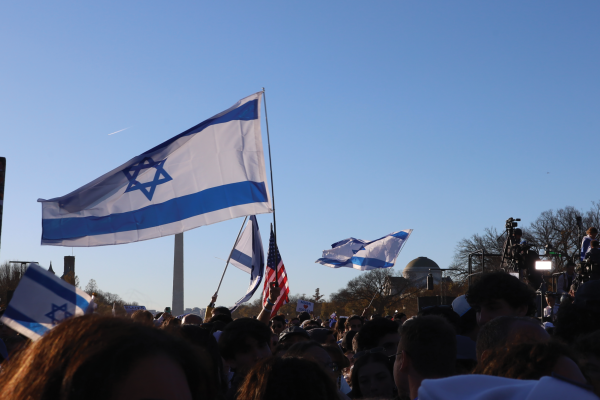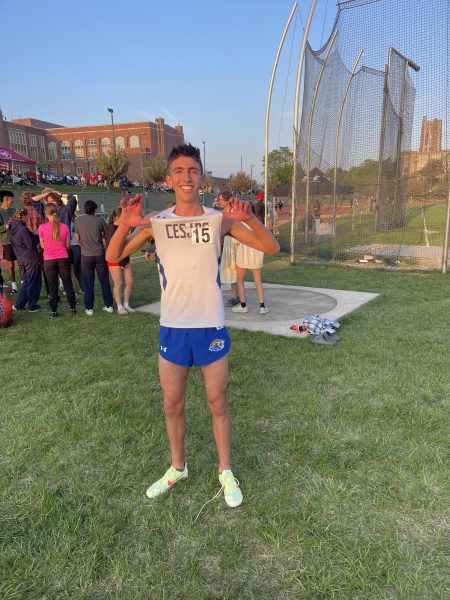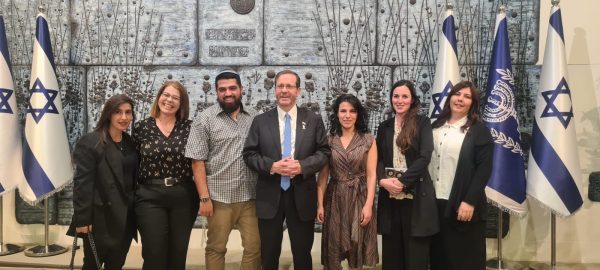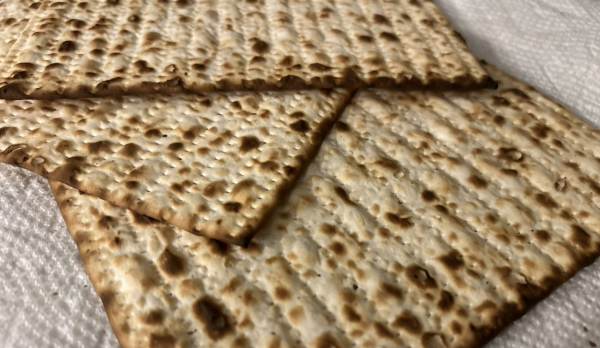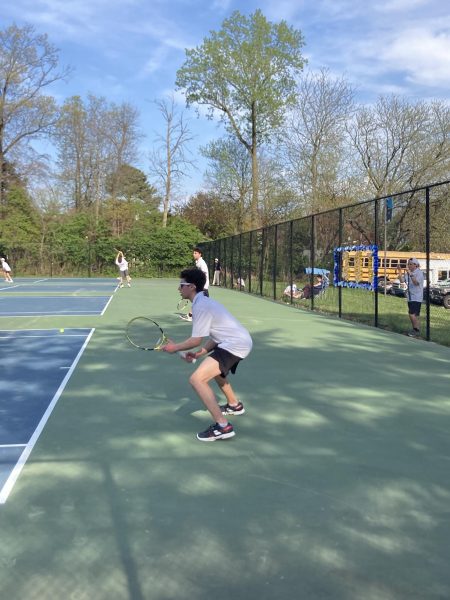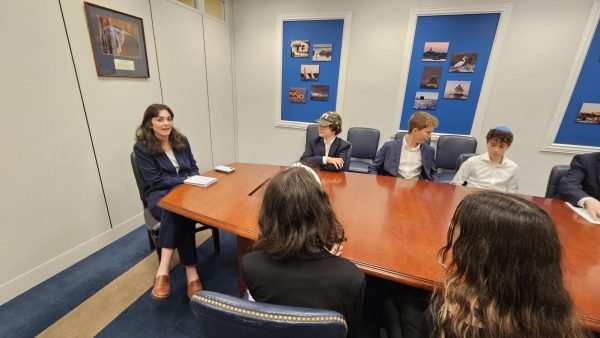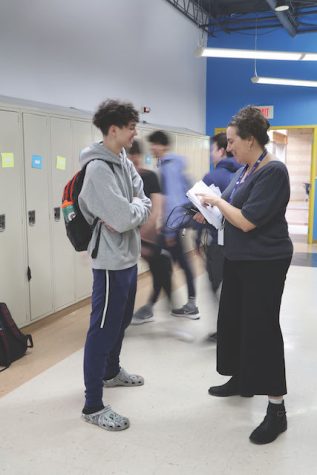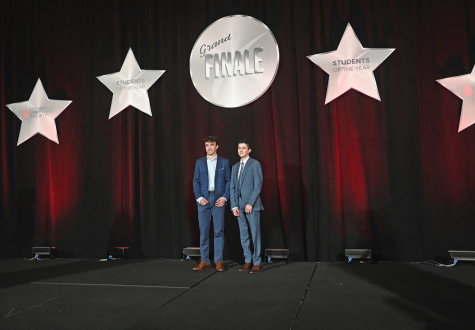Guarded
Local Jewish communities cope with the Pittsburgh attack
On Oct. 27, 11 Jews were shot and killed at the Tree of Life Synagogue in Squirrel Hill Pittsburgh, Pa. The shooting was “likely the deadliest attack on the Jewish community in the history of the United States,” the Anti-Defamation League said.
The recent shooting correlates to an increased number of anti-Semitic incidents in the U.S. According to the ADL’s annual report, the number of anti-Semitic attacks in 2017 was almost 60 percent higher than in 2016. This was the largest single-year increase since the ADL began tracking anti-Semitic events in the 1970s.
CESJDS’ Initial Response
As a large Jewish institution, CESJDS’ administration felt that the shooting was something the school needed to address, according to Associate Head of School and High School Principal Marc Lindner. Over the weekend, JDS administrators quickly discussed their approach and what direction the school should take in response to the attack. Ultimately, they addressed the tragedy by holding a school-wide assembly the Monday following the shooting, discussing it in various Zman Kodeshes and holding an event to write letters and to members of the Squirrel Hill community.
According to Lindner, the most important part of the assembly was making sure that the school was “clear and direct” in acknowledging the event. Additionally, Lindner hoped that the assembly would be a space to honor the victims and reiterate the available support for students and faculty following the emotionally-triggering incident.
Initially, Lindner was not sure if having an assembly was the best approach for students because he worried about raising such a difficult topic; however, he realized that not talking about the devastating occurrence could be more damaging than facing the facts head-on.
“I think it was talking to some of my colleagues about it and coming to the realization that the speculation or rumors that might exist among the student body if we weren’t talking directly and doing it fairly quickly, it may have been worse than any upset that the discussion may have caused,” Lindner said.
Lindner and other administrators also discussed alternative ways of talking about the shooting in small group settings, in either grade-wide meetings or in high school advisories. They agreed, however, that having the whole school together would be the best choice.
Junior Rebecca Weiss appreciated the assembly and thought that it was appropriate for the occasion. She knew that JDS could not take a political stance on gun-related issues because of its pluralistic mindset, but overall found the assembly “meaningful,” especially the moment of silence.
In contrast, while sophomore Tess Mendelson believes that JDS usually does a “great job” in responding to different important events, she was displeased with the school-wide assembly. She believes that JDS deemphasized the attack by having limited discussions, and that the administration could have prepared a more meaningful activity during the days after, particularly since the shooting targeted Jewish people and JDS is a Jewish institution.
“I definitely think we do a better job with more uplifting events such as events that went well for the Jewish people,” Mendelson said. “JDS is a Jewish school, and I think we should have had more discussions and reflection time, especially since this actually affects us, and hit so close to home for a lot of us.”
Security
Although Lindner and the administration initially focused on the details of the response following the shooting, other faculty members, such as Director of Operations and Security Izzy Moskowitz, were working towards improving the school’s infrastructure by implementing security measures outside and within the school’s premises.
Given that the shooting specifically targeted Jews, students, parents and administrators were concerned and wanted to determine JDS’ response as a Jewish institution regarding security, to ensure the safety of all members.
JDS currently has an advanced security system compared to many other institutions in the area, according to Moskowitz. Even though there are bulletproof windows, advanced cameras in some parts of the school and a police presence, the Security Task Force, comprised of members from the Jewish Federation, the Israeli Embassy and the JDS administration, sought improvements.
In response to the shooting, JDS increased the on-campus police presence from just the beginning and end of the day. This change was determined on short notice during the weekend of the shooting, by Head of School Rabbi Mitchel Malkus, Moskowitz and Security Task Force Chair Ayala Nuriely Kimel.
This police presence is comprised of off-duty Montgomery County police officers. According to Malkus, JDS chose off-duty police officers, as opposed to armed guards from the security company the school uses or retired guards, even though they are more expensive than other options.
“These are people who are constantly training how to use their guns properly, their weapons properly, and we feel safer with them,” Malkus said.
In addition to the increased police presence, more bulletproof glass was installed on exterior doors and windows over Thanksgiving week. Finally, faculty were instructed to wear their identification badges to differentiate them from guests of the school.
With the school’s security advancements and improvements comes a large monetary cost and therefore, a critical evaluation: whether it is all worth the $250,000 that JDS budgets for security annually.
The money is raised through various grants or comes out of the school’s yearly budget. Moskowitz believes that if JDS strives to “be ahead of the curve” in regards to security advancements, the high cost is worth it.
“Security is a mental state of mind. It’s a physical proposition, but the feeling is important. Do I feel safe? If I put 10 cops around you, would you feel safe?” Moskowitz said. “I think there is no price to pay for a secure school. If a kid were to be hurt, I would be devastated. There is no price for it and [price] doesn’t matter. We locate what we need and then find the money by contracting out.”
While the security budget accounts for previous security measures, that budget does not include monetary costs for the recent increase in police presence. When a police officer was only present at the beginning and end of the days, that cost the school $65,000 a year. That price was boosted to $130,000 per year when police hours were extended all throughout the day and evening. Malkus shared that the school’s plan is to reach out to donors to cover the difference, and the school made the change knowing that they were going to have to find the money to pay for it.
“We didn’t want to wait, and thought it was important to do it right away,” Malkus said.
Even though some of the improvements, such as bulletproof windows or cameras, are not immediately noticeable, the police presence has received attention from students and faculty, and, according to Malkus, been “welcomed.”
Malkus was initially apprehensive about having armed guards at the school, but has gotten to know the four or five police officers who consistently spend time at JDS and believes that overall, they are important to the overall security of the school.
“They provide both a deterrent, because they are outside and they leave the [police car] lights on, and also, they understand our security needs,” Malkus said. “I actually think that actual security has been improved, people have received it well, and some of my concerns about not being welcoming or having guns around don’t seem to be an issue.”
A feeling of trust and comfort in the police is not exclusive to Malkus. For Weiss, the police have allowed her to understand the importance of increased security measures and do not intimidate her.
“It is kind of sad that every time I see it, I am reminded of this horrible tragedy and reminded that we are in constant danger with the anti-Semitism that occurs,” Weiss said. “It is scary every time I see [them] because I am reminded of that feeling that I am not safe and that anti-Semitism exists, but I am glad that we have one, even though it reminds me of that.”
Being part of the larger Jewish community in Montgomery County is certainly beneficial for Jewish institutions. On Tuesday, Nov. 27, in response to the Pittsburgh shooting, the Montgomery County Council approved an appropriation of $200,000 to the county Office of Emergency Management and Homeland Security’s fiscal 2019 budget. This money was offered in efforts to help local congregations that are eager to develop a more extensive security system, according to County Executive Isiah Leggett, who was quoted in Bethesda Magazine.
Additionally, all Montgomery County congregations are encouraged to apply for grants to “augment their resources already expended” for security improvements, Leggett wrote in an announcement to the council.
The Montgomery County Council was not alone in granting appropriations to the local community. Immediately following the shooting, the Jewish Federation of Greater Washington allocated $100,000 to the local community for security and emergency purposes. Local Jewish institutions were additionally encouraged to apply for such grants, in the hopes of advancing their security.
JDS applied for the grants that the Federation was giving out, but it has yet to disperse the funds. According to Malkus, the grants were only about a couple thousand dollars per institution, which would not “go a long way” for the school.
Even before the news of the grant, other local Jewish institutions were quick to increase their security following the shooting. For example, Congregation Adas Israel in Washington, D.C. installed metal detectors shortly after.
Emotional Repercussions
Throughout the assembly on Oct. 29, Lindner reiterated that JDS recognizes that everyone processes tragedies differently and that no approach is incorrect. When unpacking the situation and the impact the tragedy had, there were many “layers and dimensions,” guidance counselor Rachel Soifer said.
“One layer is just shock, horror, and feeling overwhelmed that immediate visceral reaction, and then this other extreme of feeling desensitized, like again, again, another shooting, and then there was a third piece of having it be more personal,” Soifer said. “‘Wait, this is my Jewish community, I am working in a Jewish school, I am going to know people who have connections to this,’ and that particular dimension changed that for me personally, and prompted me to start thinking of things a bit differently than other violent acts that are similar to this violent act of hate.”
Given that the school anticipated many different emotions from the community, Lindner reiterated that the guidance suite is a perpetual place of support for students who were particularly sensitive or wanted to express how they felt. Although there were few kids who chose to take the additional support, Soifer believes that other students sought support through stronger connections by gravitating towards their friends, families and teachers when expressing their emotions.
In addition to inviting students into the guidance suite, the guidance department partnered with Dean of Students Roslyn Landy and a student-led committee to demonstrate support for the Pittsburgh community and allow students to channel their emotions into productively helping the larger community. Throughout community time and lunch, students had the opportunity to write letters to the Tree of Life Congregation, to the Hebrew Immigrant Aid Society (HIAS), to representatives in Congress, to police officers who guard JDS or to the first responders and local police officers in Pittsburgh who stepped in to stop the shooter during the attack.
Hours after the attack, the Federation reached out to organizations to hastily create a community-wide event in response to the tragedy, and partnered with Adas Israel to host it on behalf of the community. Twenty-four hours later, an entire event to pay respect, unite the community and show a sign of force against hate was planned with political speakers, the governors of Maryland and Virginia, the Mayor of The District as well as rabbis and other faith leaders.
As the event at Adas Israel was the primary event for the Greater Washington area, over 5,000 people were in attendance; 3,000 of whom were able to enter, leaving over 2,000 multi-faith community-members outside watching from large screens. Instead of merely standing in line, however, community members ended up having their own solidarity service on the streets.
The Federation’s efforts to bring comfort to the community did not stop with the community-wide solidarity service. The following weekend, the Federation encouraged local synagogues to have a Solidarity Shabbat, a Shabbat devoted to synagogues being a welcoming, empathetic and secure place for all community members.
Although the tragedy occurred almost two months ago, the support and empathy for one another should still continue to circulate throughout the community, according to Director of Jewish Life Stephanie Hoffman. Moreover, a common response to shootings is to hide one’s identity, but Hoffman believes that as a Jewish institution, students and faculty should embrace, rather than conceal, their Judaism.
“Our Judaism doesn’t live within the four walls of this building: it goes beyond that,” Hoffman said. “People need to know Jews, people need to know that we are humans, and we want as a whole the best for people, and so I think just being proud Jews no matter where you are, no matter where we are, that I think is a huge part of supporting.”
This story was featured in the Volume 36, Issue 3 edition of The Lion’s Tale, published on Dec. 20, 2018.
